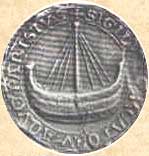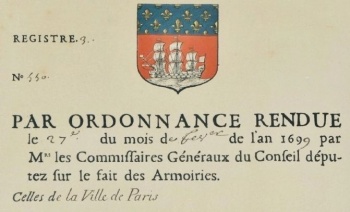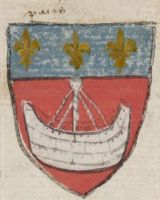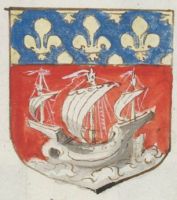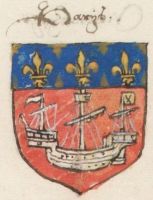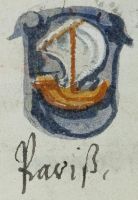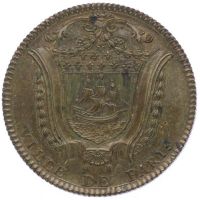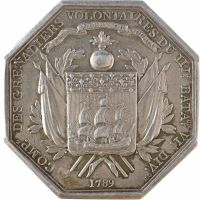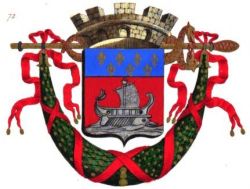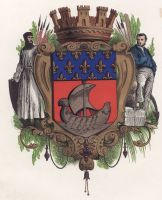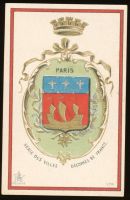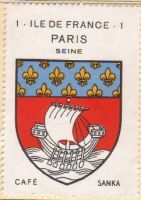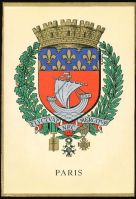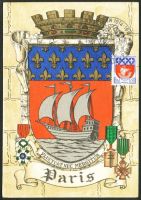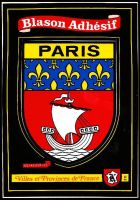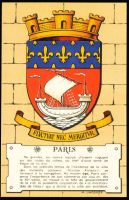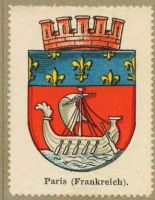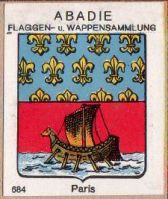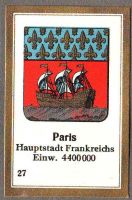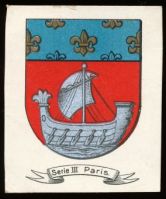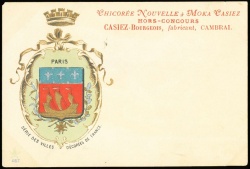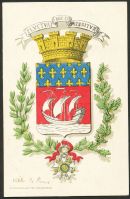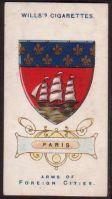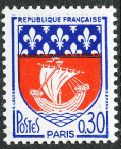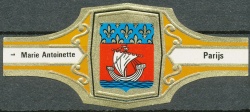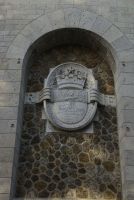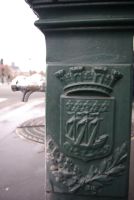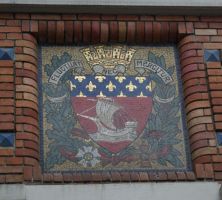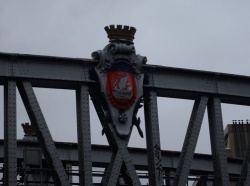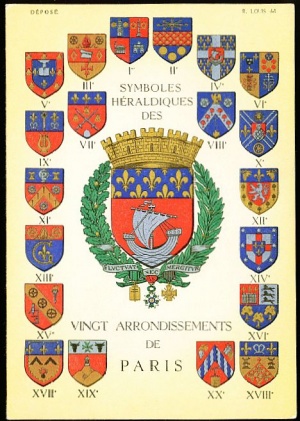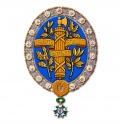Paris
|
Country : France Département : Paris |
| French |
|
| English | blazon wanted |
Origin/meaning
The ship first appears in the early 13th century seal of the city. The oldest surviving seal dates from around 1210. The seal shows a typical ship of the time. The image remains the same until the 15th century, when the ship is modernized and three fleur-de-lys appear on the sail.
The ship indicates the importance of shipping on the Seine river for the city.
| Seal of Paris from the 13th century |
During the 14th century the image of the seal was transferred to a shield. The chief with the arms of France were granted in 1358 by Prince Charles (later King Charles V), creating the composition of the present arms.
The design has remained unaltered since the 14th century, but the size and type of the ship, as well as the number of fleur-de-lys in the chief has changed considerably during the centuries.
The arms were first officially registered in the Armorial de France on February 27, 1699. The arms were granted without supporters, but during the years many differnet supporters and ornaments have been used in literature or on decorations in the city. There has not been any consistent official use and no supporters were ever granted.
| The arms from 1699 |
In June 1790 the nobility was abolished and in November 1790 a decree was published statting that all use of arms in the city of Paris was to be ended, and all arms on official buildings were to be removed. This situation remained until the rise of Napoleon.
During Napoleonic times the arms were changed, the chief of France was replaced by the three bees of a city of the first rank. In addition, the ship was described as having the Goddess Isis sitting in the front and a star was added to the shield. These arms were officially granted on January 29, 1811. Like all cities of the first rank, Paris was also entitled to use a mural crown with the Napoleanic eagle as crest, and the shield could be surrounded by laurel leaves.
| Arms of Paris from 1811 |
Already in 1817 King Louis XVIII changed the arms again and reverted to the old design. However, now two lilies were added as 'supporters' to the shield. These arms were granted on December 20, 1817.
| Arms of Paris from 1817 |
The motto 'Fluctuat nec mergitur' (He who rises with the wave is not swallowed by it) was officially added by the city on November 23, 1853. However, no official decree of Napoleon III (Emperor at the time) exist, which made the use of the motto not legal.
On October 9, 1900 the city received the Légion d'Honneur, which made it possible to add the cross of the Légion to the arms. Four proposals were made, with the cross in the chief, as an escutcheon, behind or below the shield. Finally it was decided to place the cross below the shield and the motto above the shield. These arms were officially granted on March 27, 1901.
| Proposals to add the cross of the Légion d'Honneur |
On February 14, 1924, the city again received new arms, now with the War Cross 1914-1918 added. At the same time the ship was for the first time properly described as an ancient boat, indicating the shape of the original seal. The present arms were granted on August 20, 1949 when also the Liberation Cross of 1945 was added.
At present the ship is designed in a similar way as in the 14th century. But in between the ship was shown as a large galley or other types of ships, as can be seen on the images below. Several times there were serious discussions about the size and shape of the ship, as the official blazon only stated a ship. Only in 1924 the ship was properly described.
Image gallery
The arms in a 16th century manuscript
The arms on a tobacco card by Laurens
The arms in the Café Sanka album +/- 1932
The arms on a postcard by Kroma
The arms in a 1936 album
The arms in the Wappen-Sammlung (1900)
The arms in the Abadie albums
The arms in a 1930s album
The arms in a German album +/- 1910
The arms on a cigar band
The arms on a cigar band
The arms on a cigar band
Districts of Paris
Paris is divided into 20 districts. These have no official arms, but still some arms have been designed, which are sometimes used.
French heraldry portal
This page is part of the French heraldry portal |
Heraldry of the World |
|
French heraldry:
Overseas territories:
|
Selected collector's items from France:
|
Contact and Support
Partners:
Your logo here ?
Contact us
© since 1995, Heraldry of the World, Ralf Hartemink 
Index of the site
Literature: Declerck, 2007



